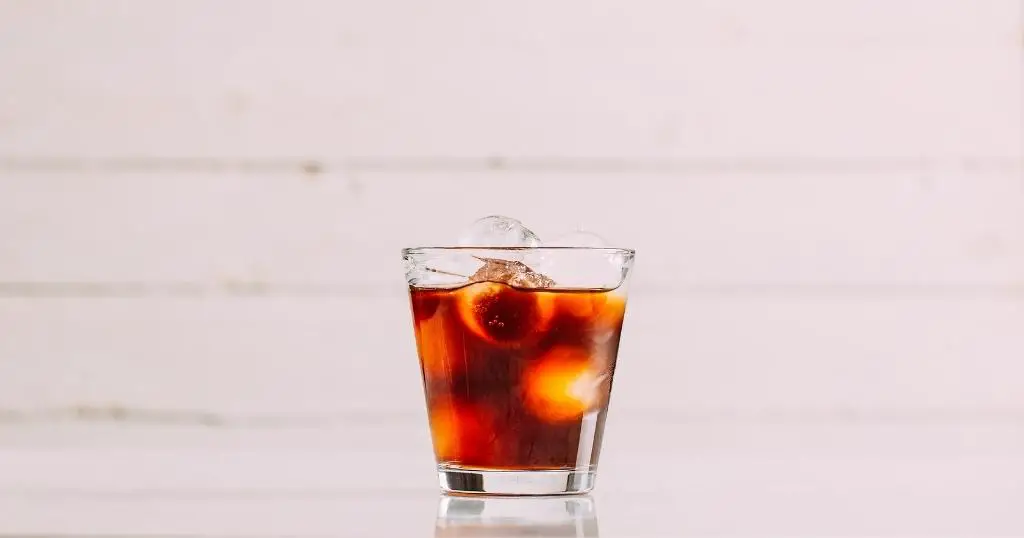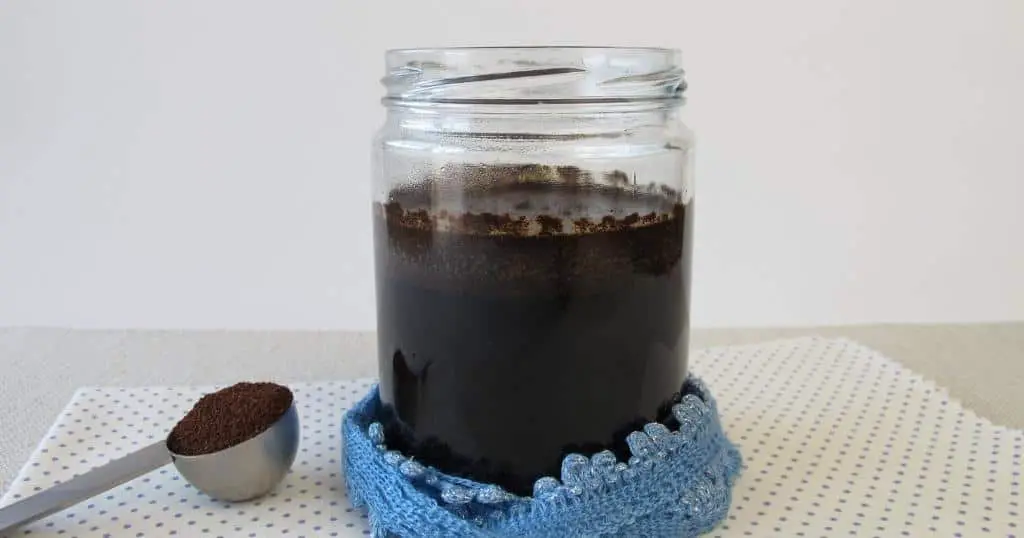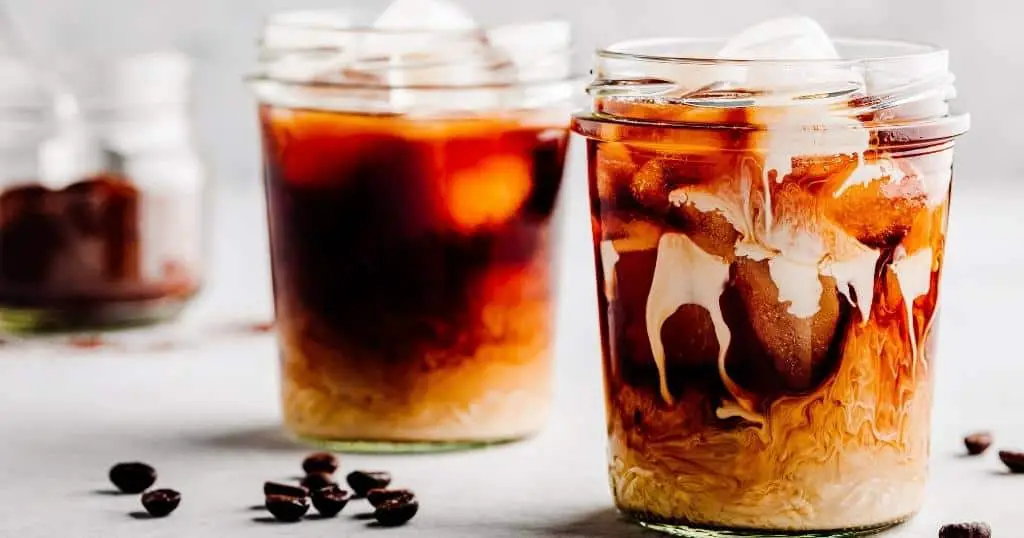Iced Coffee vs Cold Brew: What’s The Difference Between Iced Coffee and Cold Brew Coffee?
It’s a hot summer day and you’re looking for a cold, delicious, and refreshing drink – iced coffee and cold brew coffee are great options. While some may consider cold brew coffee or iced coffee to be a summertime drink, I’m a firm believer that we can all drink these cool, caffeinated beverages at any time or season of the year.
Cold brew and iced coffee differ in how they are brewed and how they are served. Iced coffee is brewed with hot water then served over ice to cool it down. In Australia, iced coffee is also usually served with milk, cream and ice cream. Cold brew coffee is brewed using cold water and steeped for up to 12 hours. It is usually served black, over ice and is less bitter.
If you place iced coffee and cold brew coffee side by side, it would be pretty difficult to differentiate which is which since they look almost identical. But although they may have a similar appearance, their tastes are quite unique – one is more refreshing with a light body and the other one has a smoother and slightly sweeter taste.
Neither cold brew coffee nor iced coffee is better than the other. If you’re wondering what the difference is and how to make these tasty cooling drinks at home, you’re in the right place. I have all the answers to the questions you seek. Sit back and relax and get ready to learn everything there is to know about iced coffee and cold brew and how to make them at home.
Contents
What is an Iced Coffee?
Iced coffee is…coffee! With ice. There are a few different ways to make and serve iced coffee, but in its most basic form, it’s simply regular batch-brewed coffee that is cooled down using ice. However, if you’re in Australia and order iced coffee while in a cafe, then it’s likely you’ll be served a brewed coffee served over ice, topped with milk, cream, and ice cream. The taste is very rich, sweet, and delicious.
In this article, though, we’ll use the term “iced coffee” to refer to the kind of drink that most of the world is used to – coffee that’s brewed hot, then chilled by pouring it over ice.

What is Cold Brew Coffee?
A cold brew coffee is a coffee that has been brewed with cold water instead of hot water and it usually involves a long steeping process – anywhere between 12-24 hours. Cold brew has a higher coffee to water ratio compared to regular drip coffee and is made by creating a concentrate which then will be mixed with fresh water (and optional flavourings) when it’s time to serve.
In terms of flavour, cold brew is generally characterised as smooth, with low acidity (aka not bitter), and heavier compared to its hot brewed counterpart. The reason why cold brew commonly has a sweeter and smoother taste is that the coffee grinds aren’t exposed to high temperatures.
If you’re cutting back on added sugar or watching your calorie intake, then cold brew would be perfect for you. Some people find that they need less sweetener and cream when drinking cold brew.
Iced Coffee vs Cold Brew: Differences
Have you ever been confused between refreshing iced coffee and cold brew coffee? It definitely can be confusing – after all, they’re both coffee served over ice. But the differences are distinct enough to learn about. These two refreshing, caffeinated drinks are brewed differently, taste different, and are served differently. Both can be made at home, and each one delivers in different ways.
Brewing Method
Iced coffee is brewed as normal hot coffee which takes a few minutes at temperatures 80° C to 93° C. After the brewing process is done, the coffee is cooled down and poured over ice. Since iced coffee is brewed hot, it can taste bitter, although high temperatures can also extract more coffee solubles than cold brew, leading to a stronger coffee flavour.
While hot brewing takes only a few minutes, the cold brewing process takes about 12-24 hours and uses room temperature or cold water. The reason it takes longer to process cold brew is that cold water doesn’t extract the good stuff from the coffee grinds as quickly as hot water, so it needs a longer time to do it. Cold brew coffee is usually brewed as a concentrate and then diluted with more cold water and ice.

Strength
The drip coffee you’re used to is anywhere from one part coffee to 16-20 parts water – this is also known as “strength”. A typical drip coffee ratio stands between 1:15 to 1:25, while cold brew has an entirely different ratio.
While heat helps extract more caffeine, cold brew is typically brewed as a concentrate, with a much higher than normal coffee-to-water ratio of between 1:4 and 1:8 – this is the reason cold brew is much stronger and has a higher caffeine concentration compared to the usual drip coffee.
Milk
It’s very common to serve iced coffee with a splash of milk. You can use any kind of milk for iced coffee – from cow’s milk to almond milk, coconut milk, rice milk, soy milk, or even hemp milk.
On the other hand, cold brew is rarely served with milk because the resultant drink is very diluted. Cold brew has its natural sweet taste as it is made without heat, which creates lower acidity for a smoother, and naturally sweet taste. But of course, you can add milk to your cold brew if you really crave it. If you’re making cold brew at home, you have the option of diluting with milk instead of water – that way, you won’t dilute the coffee too much. Or, if your cold brew is already prepared, add just a splash of milk.
Cold Brew vs Iced Coffee: Similarities
Now you know the differences between the two drinks, let’s get into the similarities shared by cold brew and iced coffee.

Sweetness
Neither iced coffee nor cold brew come sweetened as standard. But both commonly have sweeteners added to the taste of the drinker. However, cold brew does naturally taste less bitter than iced coffee. This is down to the brewing process that doesn’t use any heat.
In case you want your iced coffee or cold brew to have a sweeter taste, honey can be a solution for this. Honey is one of the best natural liquid sweeteners available, and it’s likely you have some in your kitchen already. Otherwise, you can add some pre-dissolved sugar/artificial sweetener or coffee syrup.
How to Make an Iced Coffee at Home
Lucky you – homemade iced coffee requires no special ingredients which means you can make a cup whenever a craving strikes!
You’ll need a few things beforehand:
- Double espresso (or a very short, strong coffee from your usual method)
- Milk of your preference (optional)
- Ice (use ice made from frozen coffee if you want to avoid your drink being too diluted!)
- Sugar (optional)
Here’s how to make iced coffee:
- Brew a short, punchy coffee – a double espresso works best
- Melt 1 tsp of sugar into the hot coffee (adjust to suit your taste)
- Pour the coffee over a glass of ice
- Top up with milk if you’re using it & stir for a moment (you can also add any topping of your preference)
- Your iced coffee is served and ready to enjoy!

How to Make Cold Brew Coffee at Home
Making cold brew coffee is no great secret and it doesn’t require the ninja-level skills of a trained barista in order to master. Here’s how.
What to do:
- Coarsely grind some coffee
- Add cold (or room temperature) water
- Let it steep for a long period of time – usually around 12-24 hours
- Separate the coffee grinds from the liquid and you’re done! You just made your own homemade cold brew coffee.
In theory, you can choose any type of coffee to make a cold brew. If you’re a cold brew lover, then I recommend coffees with sweet and fruity tasting notes, particularly naturally processed African (especially Ethiopian) coffee. But anything can work.
Difference Between Iced Coffee and Cold Brew Coffee Coffee FAQs

How much caffeine is in an iced latte?
Iced latte usually contains two shots of espresso, which is about 126 mg of caffeine.
How much caffeine is in cold brew?
On average, a cup of cold brew coffee contains around 200 mg of caffeine – this is roughly 50 mg more caffeine than the average iced coffee.
Additionally, many factors can influence how much caffeine is in cold brew, including the amount of coffee beans, the length of brewing time, serving size, and more.
How long is iced coffee good for?
It’s best to drink iced coffee as soon as it’s served. Iced coffee has ice in it, and this will melt. That means you’ll end up with watery, diluted coffee.
However, you can use frozen coffee cubes as your ice cubes in your iced coffee. This means that even when they melt, your coffee won’t become diluted. In either case, your coffee will still be safe to drink if it’s kept in the fridge, doesn’t contain milk, and is stored in an airtight container for 7-14 days.
How long is brewed coffee good for?
Typically, cold brew can last seven days to two weeks if it’s stored in the fridge using an airtight container and doesn’t contain milk.
Next, learn what is the difference between flat white and cappuccino coffee drinks? and check out more brewing guides here.





